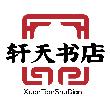
【全新正版】 有机化合物结构分析(供药学化学及相关专业使用)(英文版)
全新正版图书,支持七天退换,可开具电子发票。
¥ 48.94 8.3折 ¥ 59 全新
库存2件
上海黄浦
认证卖家担保交易快速发货售后保障
作者编者:江仁望
出版社化学工业
ISBN9787122337481
出版时间2019-05
装帧其他
开本其他
定价59元
货号30604729
上书时间2024-06-18
- 最新上架
商品详情
- 品相描述:全新
- 商品描述
-
目录
Chapter 1 Introduction of Spectroscopy
1.1 Introduction of Electromagnetic Radiation
1.1.1 Electromagnetic Spectrum
1.1.2 Interaction with Electromagnetic Wave
1.1.3 Wavelength (λ), Frequency (ν) and Energy (E)
1.2 Major Spectroscopic Techniques
1.2.1 Absorption Spectrum
1.2.2 Diffraction
1.2.3 Molecular and Fragment Spectrum
References
Problems
Chapter 2 Ultraviolet and Visible Spectroscopy
2.1 Introductions of Ultraviolet and Visible Spectroscopy
2.2 Principles of Ultraviolet and Visible Spectroscopy
2.3 Presentation of Ultraviolet and Visible Spectrum
2.4 Terms Describing UV Absorptions
2.5 Classification of Adsorption Bands
2.6 The Main Influencing Factors of the Maximum Wavelength
2.6.1 Conjugation Effect
2.6.2 Steric Effect
2.6.3 The Polarity of the Solvent
2.6.4 The pH of the Solution
2.7 Solvent
2.8 Relationship Between Molecular Structure and UV Spectrum
2.8.1 Saturated Hydrocarbon Compounds
2.8.2 The Simplest Unsaturated Compounds
2.8.3 The Conjugated Alkenes
2.8.4 The Conjugated Unsaturated Carbonyl Compounds
2.8.5 Aromatic Compounds
2.9 Application of UV Spectroscopy
2.9.1 Rules of Identification of Organic Compounds by UV Spectrum
2.9.2 Identification of Isomer
References
Problems
Chapter 3 Infrared Spectroscopy
3.1 Introductions of Infrared Spectroscopy
3.1.1 The Representation Method of Infrared Spectrum
3.1.2 Development of IR Spectroscopy
3.2 Basic Principle of Infrared Spectrum
3.2.1 Classical Harmonic Oscillator
3.2.2 Quantum Mechanical Harmonic Oscillator
3.2.3 Degrees of Freedom
3.2.4 Modes of Atomic Vibrations
3.2.5 Certain Terms
3.2.6 Factors Affecting Absorption Intensity
3.2.7 Important Regions in IR Spectra
3.3 Characteristic Group Absorptions of Organic Compounds
3.3.1 Alkanes
3.3.2 Alkenes
3.3.3 Alkynes
3.3.4 Aromatic Hydrocarbons
3.3.5 Alcohols, Phenols, and Ethers
3.3.6 Carbonyl Groups
3.3.7 Carboxylic Amide
3.3.8 Other Nitrogen Containing Compounds
3.4 Interpretation of IR Spectra
References
Problems
Chapter 4 Mass Spectrometry
4.1 Introduction
4.1.1 Principles
4.1.2 Instrumentation
4.2 Ionization Methods
4.2.1 Electron Ionization
4.2.2 Chemical Ionization
4.2.3 Electrospray Ionization
4.2.4 Atmospheric Pressure Chemical Ionization
4.2.5 Field Desorption Ionization
4.2.6 Fast Atom Bombardment Ionization
4.2.7 Matrix-Assisted Laser Desorption Ionization
4.3 Mass Analysers
4.3.1 Magnetic Sector Mass Spectrometers
4.3.2 Quadrupole Mass Spectrometers
4.3.3 lon Trap Mass Spectrometers
4.3.4 Time-of-Flight Mass Spectrometers
4.3.5 Tandem Mass Spectrometers
4.4 Base Peak, Molecular Ions, Fragment Ions and Metastable Ions
4.4.1 Base Peak
4.4.2 Molecular Ions
4.4.3 Fragment Ions
4.4.4 Metastable Ions
4.5 Recognition of the Molecular Ion Peak
4.6 Determination of a Molecular Formula
4.7 Fragmentation
4.7.1 Representation of Fragmentation Processes
4.7.2 Simple Cleavage
4.8 Rearrangements
4.9 Fragmentation Modes of Various Classes of Organic Compounds
4.9.1 Hydrocarbons
4.9.2 Hydroxy Compounds
4.9.3 Ethers
4.9.4 Ketoncs
4.9.5 Aldehydes
4.9.6 Carboxylic Acids
4.9.7 Carboxylic Esters
4.9.8 Amines
4.9.9 Amides
References
Problems
Chapter 5 Nuclear Magnetic Resonance Spectroscopy
5.1 Introductions of Nuclear Magnetic Resonance
5.2 Principal of Nuclear Magnetic Resonance
5.3 1H NMR Spectroscopy
5.3.1 Acquisition of 1H NMR Spectroscopy
5.3.2 Chemical Shift
5.3.3 Integration (Signal Strength)
5.3 4 Factors Influencing the Chemical Shifts
5.3.5 Coupling Constants (Spin-Spin
内容摘要
本教材介绍了有机化合物结构分析的主要技术,包括紫外光谱、红外光谱、核磁共振、质谱、X射线单晶衍射、综合解析等内容。教材采用理论与实例相结合的模式,安排了较多的科研实例。通过学习,学生
可掌握各种结构分析方法的原理、应用领域和优缺点,并掌握综合运用多种谱学手段来解析有机化合物分子结构的一般程序。
教材以英文为主,根据国内教学需求,精选教材内容,并对关键名词术语进行了中文注释。通过学习,一方面,学生可掌握大量的英文专业术语;另一方面,中文翻译的加入,可让学生更容易理解专业术语的内涵。
本教材特别适合国际药学、国际化学,以及有志于国外深造的学生学习使用。
— 没有更多了 —












以下为对购买帮助不大的评价